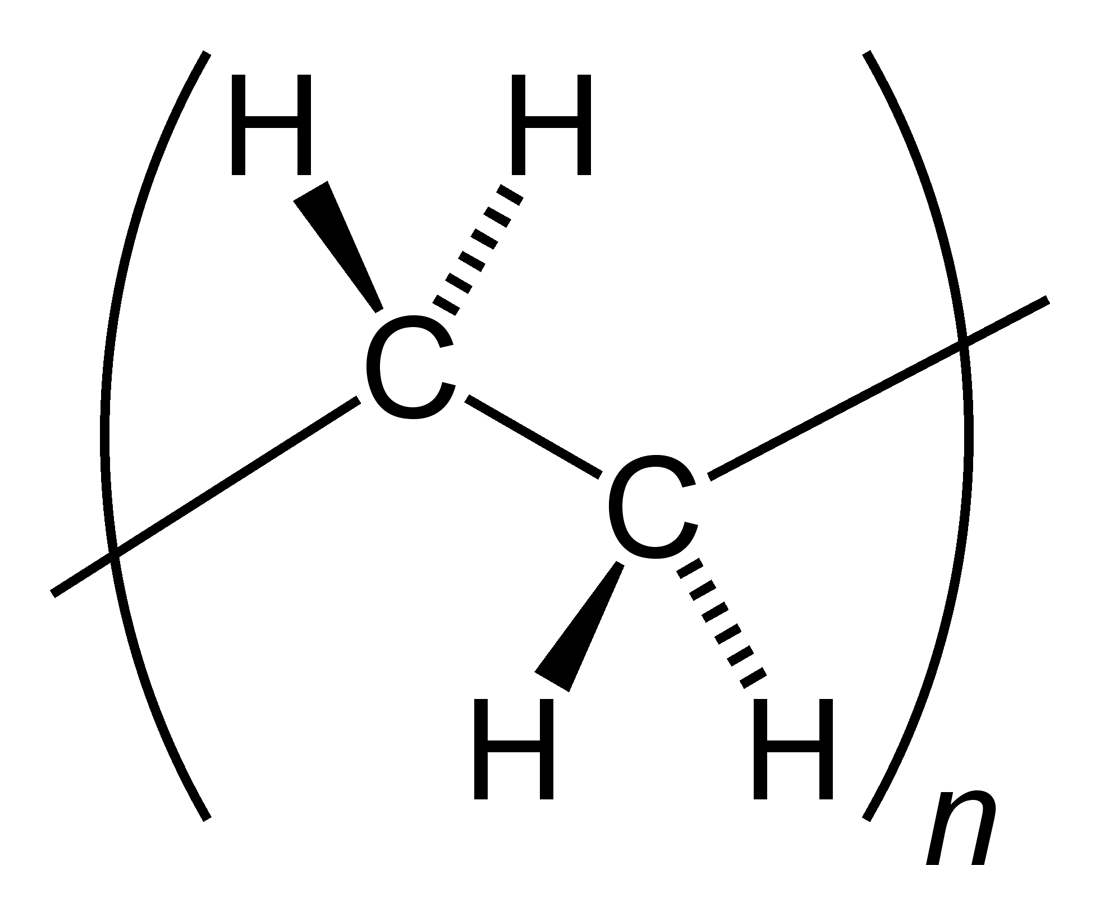|
1,1-Dichloroethene
1,1-Dichloroethylene, commonly called vinylidene chloride or 1,1-DCE, is an organochloride with the molecular formula . It is a colorless liquid with a sharp odor. Like most chlorocarbons, it is poorly soluble in water but soluble in organic solvents. 1,1-DCE was the precursor to the original clingwrap, Saran, for food, but this application has been phased out. Production 1,1-DCE is produced by dehydrochlorination of 1,1,2-trichloroethane, a relatively unwanted byproduct in the production of 1,1,1-trichloroethane and 1,2-dichloroethane. The conversion is a base-catalyzed reaction which uses either NaOH or Ca(OH) with temperature ca. 100 °C. :ClCHCHCl + NaOH → ClC=CH + NaCl + HO The gas phase reaction, without the base, would be more desirable but is less selective. Applications 1,1-DCE is mainly used as a comonomer in the polymerization of vinyl chloride, acrylonitrile, and acrylates. It is also used in semiconductor device fabrication for growing high puri ... [...More Info...] [...Related Items...] OR: [Wikipedia] [Google] [Baidu] |
1,2-Dichloroethene
1,2-Dichloroethylene or 1,2-DCE is the name for a pair of organochlorine compounds with the molecular formula . The two compounds are isomers, each being colorless liquids with a sweet odor. It can exist as either of two geometric isomers, ''cis''-1,2-dichloroethene or ''trans''-1,2-dichloroethene, but is often used as a mixture of the two. They have modest solubility in water. These compounds have some applications as a degreasing solvent. In contrast to most ''cis-trans'' compounds, the ''Z'' isomer (''cis'') is more stable than the ''E'' isomer (''trans'') by 0.4 kcal/mol. Production, uses and reactions ''cis''-DCE, the ''Z'' isomer, is obtainable by the controlled chlorination of acetylene: :CH + Cl → CHCl Industrially both isomers arise as byproducts of the production of vinyl chloride, which is produced on a vast scale. Unlike 1,1-dichloroethylene, the 1,2-dichloroethylene isomers do not polymerize. ''trans''-1,2-DCE has applications including electronics c ... [...More Info...] [...Related Items...] OR: [Wikipedia] [Google] [Baidu] |
Debye
The debye ( , ; symbol: D) is a CGS unit (a non- SI metric unit) of electric dipole momentTwo equal and opposite charges separated by some distance constitute an electric dipole. This dipole possesses an electric dipole moment whose value is given as charge times length of separation. The dipole itself is a vector whose direction coincides with the position vector of the positive charge with respect to the negative charge: : p = ''q''r. named in honour of the physicist Peter J. W. Debye. It is defined as statcoulomb-centimetres.The statcoulomb is also known as the franklin or electrostatic unit of charge. : 1 statC = 1 Fr = 1 esu = 1 cm3/2⋅g1/2⋅s−1. Historically the debye was defined as the dipole moment resulting from two charges of opposite sign but an equal magnitude of 10−10 statcoulomb10−10 statcoulomb corresponds to approximately 0.2083 units of elementary charge. (generally called e.s.u. (electrostatic unit) in ol ... [...More Info...] [...Related Items...] OR: [Wikipedia] [Google] [Baidu] |
Polyvinylidene Chloride
Polyvinylidene chloride, or polyvinylidene dichloride (PVDC), is a homopolymer of vinylidene chloride. History Ralph Wiley accidentally discovered polyvinylidene chloride polymer in 1933. At the time he was a college student who worked part-time at Dow Chemical lab as a dishwasher. While cleaning laboratory glassware, he came across a vial he could not scrub clean. Dow researchers made this material into a greasy, dark green film, first called "Eonite" and then " Saran". Ralph Wiley went on to become one of Dow Chemical's research scientists and invent and develop many plastics, chemicals and production machines. The military sprayed Saran on fighter planes to guard against salty sea spray, and carmakers used it for upholstery. Dow later devised a formulation of polyvinylidene chloride free of unpleasant odour and green colour. The most well known use of polyvinylidene chloride came in 1953, when Saran Wrap, a plastic food wrap, was introduced. In 2004, however, the formul ... [...More Info...] [...Related Items...] OR: [Wikipedia] [Google] [Baidu] |
Agency For Toxic Substances And Disease Registry
The Agency for Toxic Substances and Disease Registry (ATSDR) is a federal public health agency within the U.S. Department of Health and Human Services (HHS). The agency focuses on minimizing human health risks associated with exposure to hazardous substances. It works closely with other federal, state, and local agencies; tribal governments; local communities; and healthcare providers. Its mission is to "Serve the public through responsive public health actions to promote healthy and safe environments and prevent harmful exposures." ATSDR was created as an advisory, nonregulatory agency by the Superfund legislation and was formally organized in 1985. Although ATSDR is an independent operating agency within HHS, the Centers for Disease Control and Prevention (CDC) performs many of its administrative functions. The CDC director also serves as the ATSDR administrator, and ATSDR has a joint Office of the Director with the National Center for Environmental Health (NCEH). The ATSDR ... [...More Info...] [...Related Items...] OR: [Wikipedia] [Google] [Baidu] |
Dichloroethane
Dichloroethane can refer to either of two isomeric organochloride Organochlorine chemistry is concerned with the properties of organochlorine compounds, or organochlorides, organic compounds that contain one or more carbon–chlorine bonds. The chloroalkane class (alkanes with one or more hydrogens substituted ...s with the molecular formula C2H4Cl2: * 1,1-Dichloroethane (ethylidene chloride) * 1,2-Dichloroethane (ethylene dichloride) See also * Dichloroethene * Difluoroethane {{Chemistry index de:Dichlorethan ru:Дихлорэтан ... [...More Info...] [...Related Items...] OR: [Wikipedia] [Google] [Baidu] |
Carcinogen
A carcinogen () is any agent that promotes the development of cancer. Carcinogens can include synthetic chemicals, naturally occurring substances, physical agents such as ionizing and non-ionizing radiation, and biologic agents such as viruses and bacteria. Most carcinogens act by creating mutations in DNA that disrupt a cell's normal processes for regulating growth, leading to uncontrolled cellular proliferation. This occurs when the cell's DNA repair processes fail to identify DNA damage allowing the defect to be passed down to daughter cells. The damage accumulates over time. This is typically a multi-step process during which the regulatory mechanisms within the cell are gradually dismantled allowing for unchecked cellular division. The specific mechanisms for carcinogenic activity is unique to each agent and cell type. Carcinogens can be broadly categorized, however, as activation-dependent and activation-independent which relate to the agent's ability to engage dir ... [...More Info...] [...Related Items...] OR: [Wikipedia] [Google] [Baidu] |
National Institute For Occupational Safety And Health
The National Institute for Occupational Safety and Health (NIOSH, ) is the List of United States federal agencies, United States federal agency responsible for conducting research and making recommendations for the prevention of work-related occupational injury, injury, occupational disease, illness, disability, and occupational fatality, death. Its functions include gathering information, conducting scientific research both in the laboratory and in the field, and translating the knowledge gained into products and services.About NIOSH National Institute for Occupational Safety and Health. Among NIOSH's programs are determination of recommended exposure limits for toxic chemicals and other hazards, field research such as the Health Hazard Evaluation Program, epidemiology and health surveillance programs such as the National Firefighter Re ... [...More Info...] [...Related Items...] OR: [Wikipedia] [Google] [Baidu] |
List Of IARC Group 2B Agents - Possibly Carcinogenic To Humans
IARC group 2B substances, mixtures and exposure circumstances are those that have been classified as "possibly carcinogenic to humans" by the International Agency for Research on Cancer (IARC) as This category is used when there is limited evidence of carcinogenicity in humans and less than sufficient evidence of carcinogenicity in experimental animals. It may also be used when there is insufficient evidence of carcinogenicity in humans but sufficient evidence in experimental animals. In some cases, an agent, mixture, or exposure circumstance with inadequate evidence of carcinogenicity in humans but limited evidence in experimental animals, combined with supporting evidence from other relevant data, may be included in this group. This list focuses on the hazard linked to the agents. This means that the carcinogenic agents are capable of causing cancer, but this does not take their risk into account, which is the probability of causing a cancer given the level of exposure to thi ... [...More Info...] [...Related Items...] OR: [Wikipedia] [Google] [Baidu] |
International Agency For Research On Cancer
The International Agency for Research on Cancer (IARC; ) is an intergovernmental agency forming part of the World Health Organization of the United Nations. Its role is to conduct and coordinate research into the causes of cancer. It also cancer registry, collects and publishes disease surveillance, surveillance data regarding the occurrence of cancer worldwide. Its IARC monographs programme identifies carcinogenic hazards and evaluates environmental carcinogen, causes of cancer in humans. IARC has its own governing council, and in 1965 the first members were West Germany, France, Italy, the United Kingdom, and the United States of America. Today, IARC's membership has grown to 29 countries. History In late February 1963, after he experienced his spouse suffering and dying of cancer, journalist and Mouvement de la Paix, peace activist Yves Poggioli sent a letter to Emmanuel d'Astier de La Vigerie, Emmanuel d'Astier de la Vignerie relating his story, and urging support for ... [...More Info...] [...Related Items...] OR: [Wikipedia] [Google] [Baidu] |
Central Nervous System
The central nervous system (CNS) is the part of the nervous system consisting primarily of the brain, spinal cord and retina. The CNS is so named because the brain integrates the received information and coordinates and influences the activity of all parts of the bodies of bilateria, bilaterally symmetric and triploblastic animals—that is, all multicellular animals except sponges and Coelenterata, diploblasts. It is a structure composed of nervous tissue positioned along the Anatomical_terms_of_location#Rostral,_cranial,_and_caudal, rostral (nose end) to caudal (tail end) axis of the body and may have an enlarged section at the rostral end which is a brain. Only arthropods, cephalopods and vertebrates have a true brain, though precursor structures exist in onychophorans, gastropods and lancelets. The rest of this article exclusively discusses the vertebrate central nervous system, which is radically distinct from all other animals. Overview In vertebrates, the brain and spinal ... [...More Info...] [...Related Items...] OR: [Wikipedia] [Google] [Baidu] |
Polyethylene
Polyethylene or polythene (abbreviated PE; IUPAC name polyethene or poly(methylene)) is the most commonly produced plastic. It is a polymer, primarily used for packaging (plastic bags, plastic films, geomembranes and containers including bottles, cups, jars, etc.). , over 100 million tonnes of polyethylene resins are being produced annually, accounting for 34% of the total plastics market. Many kinds of polyethylene are known, with most having the chemical formula (C2H4)''n''. PE is usually a mixture of similar polymers of ethylene, with various values of ''n''. It can be ''low-density'' or ''high-density'' and many variations thereof. Its properties can be modified further by crosslinking or copolymerization. All forms are nontoxic as well as chemically resilient, contributing to polyethylene's popularity as a multi-use plastic. However, polyethylene's chemical resilience also makes it a long-lived and decomposition-resistant pollutant when disposed of improperly. Being a h ... [...More Info...] [...Related Items...] OR: [Wikipedia] [Google] [Baidu] |




